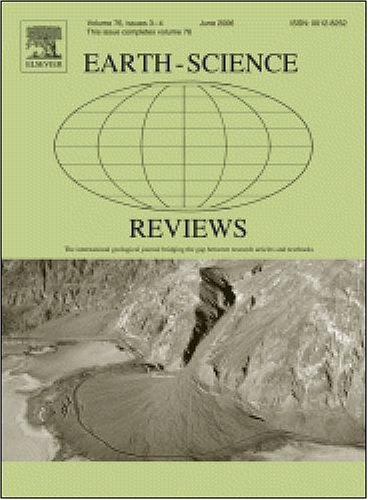化石叶角质层:制备和古co2分析的最佳实践
IF 10
1区 地球科学
Q1 GEOSCIENCES, MULTIDISCIPLINARY
引用次数: 0
摘要
叶角质层是一种蜡状的外壳,保护叶子免受干燥、紫外线损伤和磨损。角质层编码植物的化学信息、叶表皮和气孔细胞形态。近两个世纪以来,化石叶片角质层一直被用于确定分类亲缘关系,近几十年来,人们认识到它在重建古环境和古气候,特别是大气CO2方面的价值。化石叶角质层制备技术通常被报道为与个体研究相关的单一工作流程,从在野外发现化石开始,通过准备角质层进行化学和形态学分析的步骤,包括决定显微镜类型和不同空间尺度(视野数量,叶子和物种)的采样努力水平。这些出版物的孤立性使得为新研究找到合适的方法和工作流程变得困难,特别是对于经验不足的研究人员。在这里,我们试图综合现有工作流程的广度,并提出建议,以指导新研究的方法决策,特别关注通过基于叶片气体交换原理的代理(Franks模型)重建古二氧化碳。我们描述和注释准备角质层分析的化学程序,并包括关于叶片条件的建议,每个是最合适的。对于重复测量形态学(如气孔密度)的研究,我们描述了一种重新采样程序,可以实时指导采样工作的决策。本文章由计算机程序翻译,如有差异,请以英文原文为准。
Fossil leaf cuticle: Best practices for preparation and paleo-CO2 analysis
Leaf cuticle is the waxy envelope that protects leaves from desiccation, UV damage, and abrasion. The cuticle encodes information about a plant's chemistry and leaf epidermal and stomatal cell morphology. Fossil leaf cuticle has been used to determine taxonomic affinities for almost two centuries and recognized in recent decades for its value in reconstructing paleoenvironments and paleoclimates, especially atmospheric CO2. Fossil leaf cuticle preparation techniques are typically reported as single workflows tied to individual studies, starting with finding fossils in the field through the steps of preparing cuticle for chemical and morphological analysis, including decisions about type of microscopy and level of sampling effort at different spatial scales (number of fields-of-view, leaves, and species). The siloed nature of these publications makes finding appropriate methods and workflows for new studies difficult, especially for less experienced researchers. Here, we attempt to synthesize a breadth of existing workflows and make recommendations to guide methodological decision-making for new studies, with a particular focus on paleo-CO2 reconstruction via a proxy based on leaf gas-exchange principles (the Franks model). We describe and annotate chemical procedures for preparing cuticles for analysis and include recommendations regarding leaf conditions for which each is most appropriate. For studies making repeated measures of morphology (e.g., stomatal density), we describe a resampling routine that can guide decision-making, in real time, about sampling effort.
求助全文
通过发布文献求助,成功后即可免费获取论文全文。
去求助
来源期刊

Earth-Science Reviews
地学-地球科学综合
CiteScore
21.70
自引率
5.80%
发文量
294
审稿时长
15.1 weeks
期刊介绍:
Covering a much wider field than the usual specialist journals, Earth Science Reviews publishes review articles dealing with all aspects of Earth Sciences, and is an important vehicle for allowing readers to see their particular interest related to the Earth Sciences as a whole.
 求助内容:
求助内容: 应助结果提醒方式:
应助结果提醒方式:


